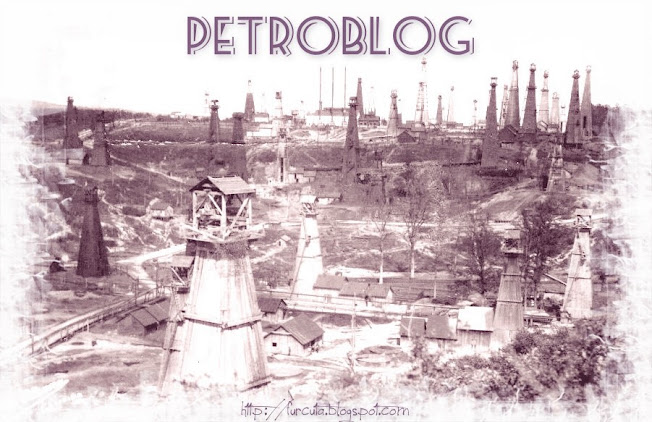The beginning of a new well .
Road flooded with oil in Bustenari region .
Oil extraction with "hecna cu cal" .Oil extraction with "hecna cu cal" .
"Put cu tambre"
"Put cu tambre"
Digging an oil well. Moinesti, 1875.
Prospecting hand-dug gas well in Transilvania .
Oil extraction at Moreni,Romania middle 19th century.  ''Puț de țambre & hecna cu cal''
''Puț de țambre & hecna cu cal''
Well no.2 Gura Draganesei in 1885.



1861 - The first well drilled in Romania, to a depth of 150m, using wooden rods and auger type bits
The hand-dug wells in Moreni,Roumania are highly interesting relics of a period which is now relegated to the past, though so long as the Roumanian petroleum industry exists, so long will the old hand-dug wells be associated with it. These wells are about 5 feet in diameter, and are sunk through alternate layers of clay, schisty clay, sandy clay, sandstone, and petroliferous sand to the more shallow oil horizons. They are dug by workmen who descend dressed with the minimum of clothing, usually saturated with oil, and wearing a tin hat to protect the head from falling stones, etc. The sides of the wells are lined with impermeable clay, which is protected by wicker-work. The man is lowered by a rope, air being supplied to him by means of bellows. At some places the rotary fan was employed more recently, but somehow it frequently happened that it was operated in the wrong direction, and the unfortunate digger was asphyxiated. These old wells have a depth of about 450 feet, and though their yield of oil is not considerable, it has for many years been a paying proposition to those engaged in this primitive method of petroleum production. The excavated earth, when digging these wells, was brought to the surface in buckets, lowered and raised by means of either manual labour or horse traction. When the first oil source, was reached and the extraction of the crude oil com- menced, this was accomplished by means of the use of wooden buckets or leather skins, one being lowered empty while the other was raised full. By this means it was possible to raise as much as 20 tons of the oil per day quite a considerable amount, considering the primitive means adopted.First use in 1850 at Pacureti,Prahova-with this installation it was possible to extract 2 tones of fuel oil every day. 

Hand-dug oil well at Bustenari.















.JPG)




.JPG)





























+Oil+Company+-+1925.JPG)
+Oil+Co.,+Ltd.+Cert.+of+25+shares+of+%C2%A31+ea.+-+London+1926.JPG)







.jpg)





+-+1895.JPG)



.JPG)














